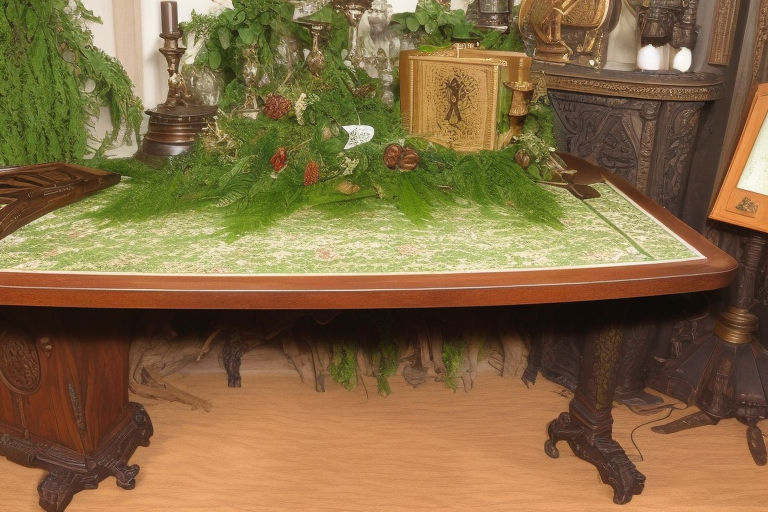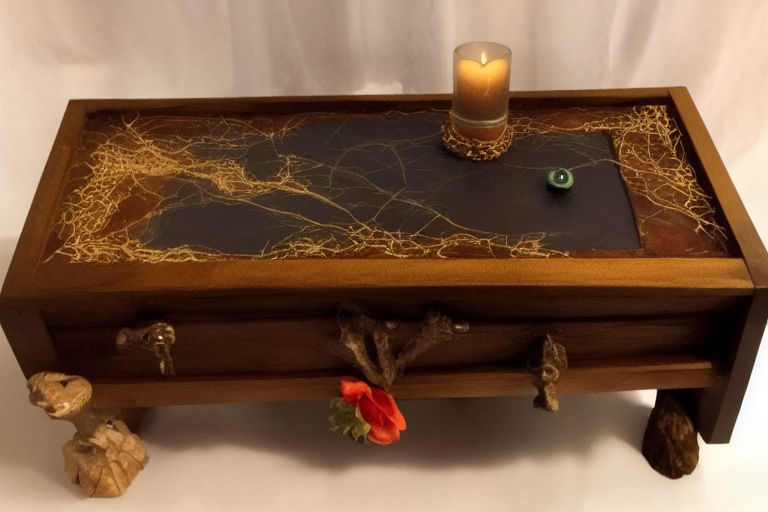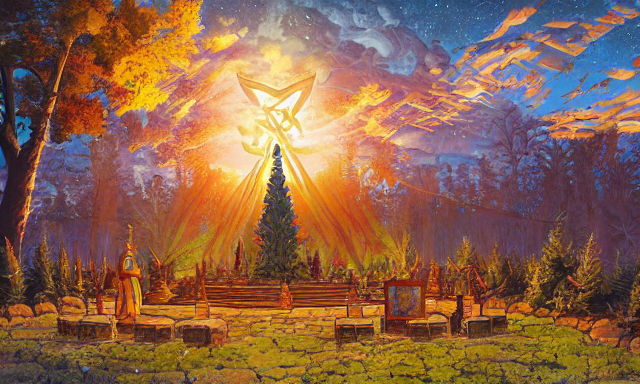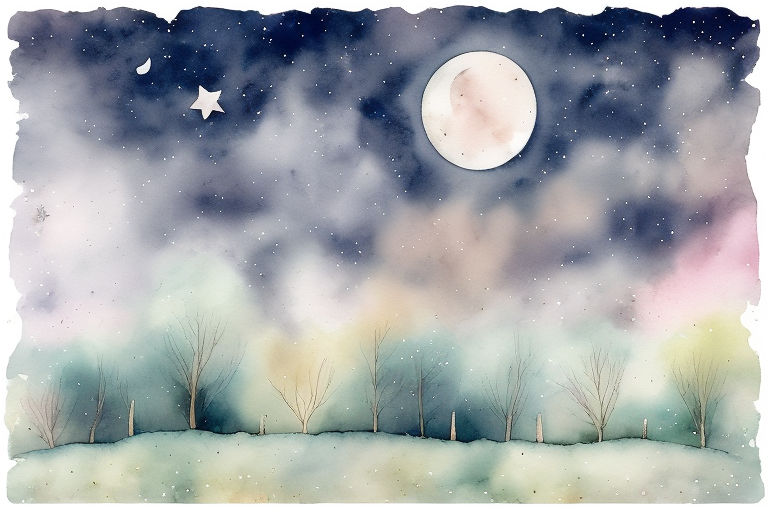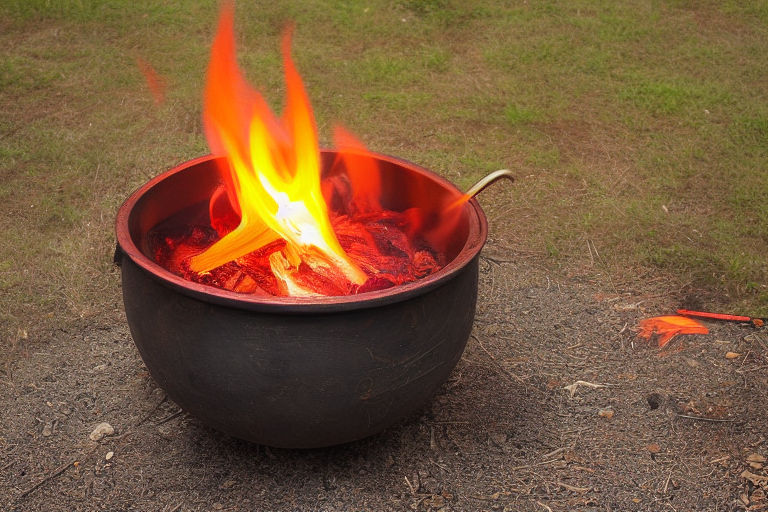The Celebration of Vikings and Samhain
The Celtic people were particularly fond of dressing up and celebrating Samhain, the festival of the good spirits and hiding from the malevolent spirits. Samhain was an important religious holiday and everyone participated. Not participating in the festival was considered a sin and a way to anger the gods or the officials of the village. The Celts also believed that Samhain would determine what would happen to them during the next months.

Alfablot
Traditionally, the Vikings did not celebrate Halloween. Instead, they held a similar festival called Alfablot. The word “alf” means “elves” and the festival is dedicated to the elves. It takes place at the end of the harvest season, when the animals are the fattest. This holiday is similar to the Irish Samhain and Day of the Dead celebrations.
The Vikings celebrated Alfablot much like the elves do, but instead of the dead, they worshiped elves. Their god, Freyr, was associated with fertility and was the ruler of the elves’ kingdom, Alfheim. This celebration was a way for the Vikings to express gratitude for their ancestors and High Power.
Historically, alfblot was a private affair. The head of a homestead, known as the olvir, was the keeper of this ritual. He would offer a sacrifice to the gods and honor his ancestors. He would kill an animal and pour the blood onto the ground to honor the gods. Afterward, the olvir would distribute the rest of the flesh to the congregation.
Disablot
The celebration of the Vikings and Samhain was not only a time for feasting and drinking, but also a time for sacrifices. The Disablot, or sacrifice, was traditionally performed by men of power. Priestesses, however, often performed this ritual. It was performed for three to five days. It was also performed outside of the celebration, by women in the community. Among the rites performed during this time were personal divination and rituals.
The tradition of disablot dates back to prehistoric times. It was a time when people would offer sacrifices to female ancestral spirits, or disir, for the coming season. The disir were the goddesses of fertility and the land. Valkyries were also worshipped during the celebration. The celebrations of the disablot are still celebrated in Uppsala, Sweden.
The celebration of Samhain and the alfablot was a way to honor the gods and the ancestors. It was also the first day of winter and the end of the harvest season.
Hostblotet
The Norsemen celebrated a holiday that is very similar to Samhain called Blot. This celebration was a time for sacrifice and worship. It was dedicated to Norse gods, such as Freyr, a god of fertility. The gods were also represented by animals and people sacrificed them on this holiday. Animal sacrifice was also common in many Ancient cultures.
Disablot, which is related to Samhain, is a festival held during the Scandinavian Winter Nights. The festival was once performed at the temple in Uppsala, modern-day Sweden. However, the celebration is no longer held there. Its origins are rooted in Old Norse literature, which mentions it in several sagas and skaldic poems. Today, it is celebrated as a market day in Uppsala.
The Vikings celebrated Samhain and Hostblotet in many ways. The first celebration of Samhain coincided with the winter solstice, when the night became longer than day. In Scandinavia, this marked the beginning of a half-year of darkness and half-year of light. It was also a time to say farewell to old Pagan gods and welcome new ones. The festival also included sacrifices for the gods.
Fallfest
Fallfest is the harvest festival held on the Winter Equinox. In the olden days, it marked the beginning of the gathering of food for the winter months. The festival also marked the first time that people and livestock would come indoors. If you missed this event, you would risk an extended winter of famine. Today, the importance of this holiday has waned.
The city will also celebrate the Norse explorer, Leif Erikson, this weekend. Erikson’s birthday is Oct. 9 and he is thought to have been the first European to arrive in North America. Because of the risks of pandemics, most events will take place outdoors. Fortunately, the extended weather forecast for the day predicts good fall weather. In addition to the festivities, Viking re-enactors will set up camp across from the city bandshell.
In Ireland, Samhain was also celebrated as a military holiday. Commanders of the army were given special thrones to sit upon. It was also a time of heavy drinking; if anyone committed a crime during the holiday, they faced death. During the festival, people would offer food and drink to the gods and sacrifice animals. In the Celtic tradition, the festival was a mandatory celebration; failure to celebrate it would result in punishment by the gods.
Yule wreath
The Yule wreath has ancient roots. It was originally used in the Viking era to celebrate the midwinter festival, the time between the Winter Solstice and the “Yule sacrifice” or Jolablot. The Viking Yule celebration lasted for about 12 days, probably from the Winter Solstice through the 12th of January. The Yule wreath is thought to be the ancestor of the Christmas wreath.
Vikings and Samhain celebrations honor the mother who founded the tribe. They also celebrate the goddess Frigg, associated with fertility, home, motherhood, and marriage. Pagan celebrations have deep spiritual roots, and the Yule wreath is one way to celebrate nature and the cycle of life.
Yule is a time of great reflection. It was also a time to remember loved ones who have passed. This wreath is an excellent substitute for a Yule tree.
Yule log
A Yule log is a traditional decoration for this winter holiday. Its origins are pagan, but Christianity was incorporated into the mid-winter festival relatively recently. The early Christian Church couldn’t compete with the pagan religions so it incorporated their beliefs into the festival. However, many traditional practices of Yule continue to this day.
The Yule log is made of wood, traditionally decorated with candles and symbolic herbs and plants. It was said to ward off evil spirits and bring prosperity to the home. In addition, the fire symbolized the return of the sun after twelve days of darkness. The tradition has its roots in pre-Christian paganism and is also believed to have Celtic roots.
The Scandinavians celebrated Yule as their most important festival, with great banquets, dances, and honoring the dead. These feasts were very hospitable, with abundant food and drink. In addition, cattle were slaughtered and other animals were offered to the gods.
Asatru holy calendar
Samhain is one of the most important festivals of the Asatru holy calendar. It marks the start of autumn in the northern hemisphere and is a celebration of the second harvest. This festival is marked by bonfires. Traditionally, villagers would cast the bones of cattle they had slaughtered on them. These fires are the source of the word “bonfire,” which is derived from the word for “bones”. In addition, all other fires were put out in celebration of the festival, and families would light their hearths from a common flame.
Samhain was also celebrated in Ireland. In recent years, a revival of the festival has occurred at the Hill of Ward, the ancient sacred site of the Samhain fire festival. Many Irish pagans have gathered in this area on Halloween to celebrate this event, and some of them have even started their own Samhain celebrations.
In addition to Samhain, the Asatru calendar celebrates other important events in the history of the Norse people. The Norse considered the year to have two seasons: summer and winter. During this time, they would perform rituals for the harvest and honor their ancestors. They also celebrated a sacrifice known as the Alfablot, which was a sacrifice for the elves. This sacrifice is tied to fertility and good harvests.
Christianisation of Scandinavian culture
The Christianisation of Scandinavian culture has a complex history and presents several challenges to scholars today. These challenges include incompatible terminology, limited primary sources, and Christian contamination of earlier sources. Jonas Wellendorff addresses these issues in his book, Gods and Humans. This book is an indispensable resource for the study of Scandinavian culture before Christianization.
The Christianisation of Scandinavia was gradual, beginning in the eighth century. During this time, Christian missionaries began to preach intermittently in the Scandinavian regions. Norse paganism was not fundamentally opposed to Christianity, and this relationship may have facilitated Christianization. For example, a 10th-century soapstone mould found in Jutland, Denmark, enabled the casting of metal Thor’s hammer amulets alongside Christian crosses. Christians sought to convert the pagan people, and the Christianization of the region continued after the 10th century. In 826AD, Danish exile Harald Klak was baptized. The event was sponsored by Louis the Pious, a Christian king.
The Christianisation of Scandinavian culture was a long and painful process. Christianity was first introduced to Denmark, where the Danish people were the easiest to convert. Christianity was spread by Viking raids, and Christians introduced Christianity to their wives and slaves. However, the Danish culture had many influences from Normandy and England, so Danish tribal leaders assimilated both faiths. In the 930s, the Danish king Harald Bluetooth firmly assimilated Christianity.



